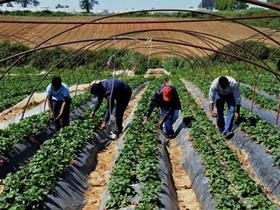
The potential reduction in migrant labour post-Brexit may kickstart long-term structural change in the horticulture and agricultural sectors, according to a new AHDB report.
The latest edition of the organisation's Horizon report looks at the impact of a UK exit from the EU on the labour force, and specifically the reliance on overseas labour.
Paid labour represents 14 per cent of the UK industry’s total financial inputs, worth some £2.5 billion in 2015, the report found. But despite this, agriculture, forestry and fishing are the lowest performing UK sectors in terms of job output per hour, and major European counterparts outstrip the UK on productivity growth in agriculture.
In conclusion, the report said that risks to availability of overseas labour could be mitigated by an increase in productivity through innovation and skills development.
“If there are restrictions in the availability of labour, the costs of employing staff are likely to rise, meaning investment in more capital-intensive production systems such as automation may become a more attractive option for growers and producers,” said AHDB head of strategic insight and report co-author David Swales.
“There would be a risk in the short term, however, that businesses could be exposed by labour shortages and become less competitive in the global marketplace. In addition, some agricultural and horticultural sectors do not lend themselves to automation.”
But Swales warned that in the current climate of uncertainty, businesses may need “significant signals” from government to prompt the investment required to offset any loss of affordable labour.
“We could see both the current structure of the industry and the nature of UK agricultural production change significantly as a result,” he added.



